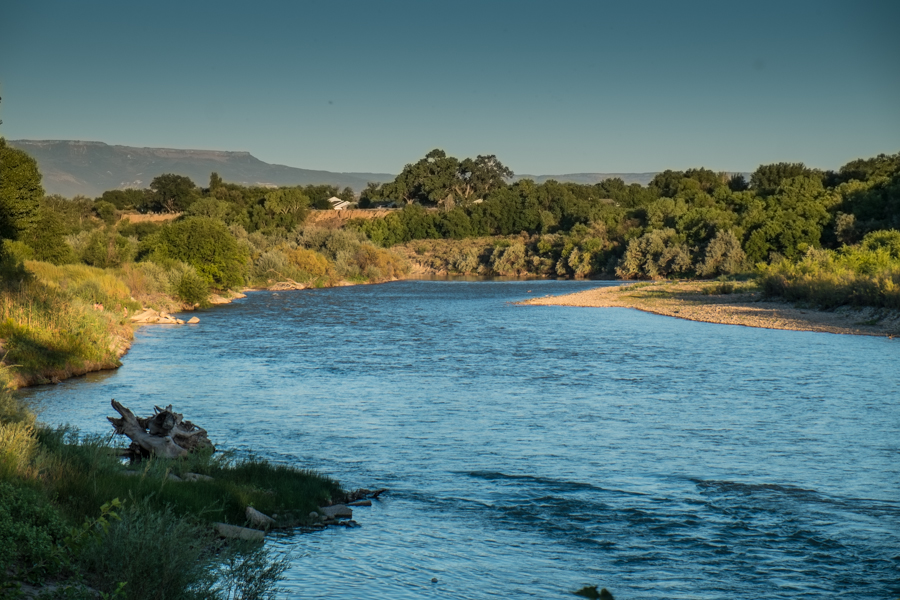The question of what is included in the “Colorado River Basin” is in part a legal one. The seven-state Colorado River Compact of 1922 defined a weird legal geography:
[T]he term “Colorado River Basin” means all of the drainage area of the Colorado River System and all other territory within the United States of America to which the waters of the Colorado River System shall be beneficially applied.
The creates the weird reality that for my entire life outside of five-plus years away at college, I have lived in the legal Colorado River Basin without ever living in the actual watershed of the great river – in suburban Southern California (where we got Colorado River water via the Metropolitan Water District’s Colorado River Aqueduct) and Albuquerque (where we get water via the Bureau of Reclamation’s San Juan-Chama Project).
I spent a really productive day today in Grand Junction, in western Colorado, at the Colorado River District’s annual Water Seminar. This is a working landscape, and there was much useful talk about how to help keep it so in a time of decreasing river flows and pressure from water users elsewhere. (Huge thanks to Eric Kuhn and Jim Pokrandt and the other folks at the River District for inviting me.)
Folks here are looking downstream nervously at the perilous state of Lake Mead. The title of the day’s meeting was “Will What’s Happening in California Stay in California?” Pat Mulroy, late of Brookings Institution, reiterated an argument that she’s been making for some time (an argument with which I agree) that we’ve created one giant interconnected artificial watershed that links the Sacramento Delta in California, via California’s vast plumbing, with the Colorado River system. When Southern California gets less water from the Sacramento System, it has to turn to the Colorado to try to pick up the slack. The resulting water management pressures link that, then, with pressures on water use here in places like Grand Junction.
But here, where the Colorado River skirts the southern edge of town, there’s no question that you’re really in the Colorado River Basin. No need for a legal arm-waving to make that clear:


When I first read Pat Mulroy’s formulation it was an eye-opener for me–and I would argue that the plumbing actually begins where a portion of the flow of the Trinity River (a major tributary of the Klamath, which enters the Pacific near Eureka, CA up near the Oregon-california border) is diverted through an 11 mile tunnel into the Sacramento River watershed for use in “water-deficient areas in the Central Valley” to quote BuRec. The volume diverted was up to 90% of the Trinity’s annual discharge, which was kind of hard on migratory salmonids. The whole sad story from Trinity County’s POV:
http://tinyurl.com/pzdtx9j